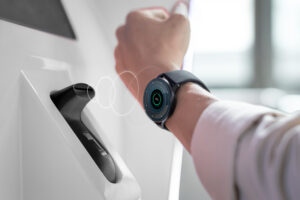The Technology Blog

Enhancing Independent Living for Seniors with Innovative Mobility Solutions
Introduction to Innovative Mobility Solutions for Seniors
As the global population ages, the need for innovative mobility solutions for seniors becomes increasingly important. These solutions not only aim to enhance the quality of life for older adults but also strive to maintain their independence and dignity. With advancements in technology and design, seniors now have access to a variety of mobility aids that are both functional and stylish. This article explores several aspects of these innovative solutions, highlighting their significance in promoting independent living among seniors.
Technological Advancements in Mobility Aids
In recent years, technological innovations have significantly transformed the landscape of mobility aids for seniors. Devices such as electric scooters, advanced wheelchairs, and smart walkers are now equipped with features that enhance safety and ease of use. For instance, many electric scooters come with adjustable speeds, ergonomic designs, and battery life indicators, making them suitable for both indoor and outdoor use. Advanced wheelchairs now offer functionalities like reclining seats, joystick controls, and even voice command capabilities, catering to a wide range of mobility needs.
Smart walkers, another remarkable invention, often include sensors that detect obstacles, provide navigation assistance, and even monitor the user’s health metrics such as heart rate and blood pressure. These features not only ensure the safety of the user but also provide peace of mind to their families. The integration of technology in these devices has made them more user-friendly and efficient, encouraging seniors to embrace them with confidence.
Moreover, the development of mobile apps that synchronize with these devices allows caregivers to monitor the mobility and health status of the user remotely. This connectivity enhances the overall care for seniors, ensuring they receive timely assistance when needed. As technology continues to evolve, we can expect even more sophisticated solutions that further support independent living for seniors.
Design Innovations: Balancing Functionality and Aesthetics
While functionality remains a top priority in the design of mobility aids, aesthetics and user comfort are also gaining attention. Modern mobility solutions are designed to blend seamlessly into the daily lives of seniors, avoiding the stigma often associated with traditional aids. For example, lightweight and foldable designs in wheelchairs and walkers make them easy to transport and store, while also appealing to the user’s sense of style.
Color choices, materials, and finishes are thoughtfully selected to give these devices a contemporary look. This attention to design not only boosts the confidence of the user but also encourages wider acceptance of mobility aids among seniors. Additionally, customizable options allow users to personalize their devices, making them feel more like an extension of their personality rather than a medical necessity.
Furthermore, ergonomic designs ensure that these devices provide maximum comfort and support. Features such as padded handles, adjustable seat heights, and shock-absorbing wheels are incorporated to reduce strain and enhance the overall user experience. By balancing functionality with aesthetics, modern mobility solutions are helping to redefine the perception of mobility aids, making them an integral and accepted part of senior living.
Community and Environmental Impact of Mobility Solutions
The introduction of innovative mobility solutions for seniors has a broader impact beyond individual users. Communities benefit from increased participation of seniors in social and recreational activities, as these aids enable them to engage more actively in their surroundings. This participation fosters a sense of inclusion and reduces the isolation often experienced by older adults.
Environmentally friendly designs are also becoming a focus in the development of mobility aids. Manufacturers are exploring sustainable materials and energy-efficient technologies to reduce the carbon footprint of these devices. Electric scooters and wheelchairs with rechargeable batteries, for instance, contribute to a reduction in emissions, aligning with global efforts to promote sustainability.
Moreover, the increased use of mobility solutions encourages the development of infrastructure that supports accessibility, such as ramps, wider sidewalks, and public transport accommodations. These improvements benefit not only seniors but also other community members with mobility challenges. By addressing environmental and community needs, innovative mobility solutions are paving the way for a more inclusive and sustainable future.
Conclusion: Embracing Innovation for a Better Tomorrow
In conclusion, the advent of innovative mobility solutions represents a significant step forward in enhancing the quality of life for seniors. By integrating technology, design, and sustainability, these solutions offer a holistic approach to independent living. As the population continues to age, embracing these advancements will be crucial in ensuring that seniors can maintain their autonomy and participate fully in society. By focusing on the needs and preferences of older adults, we can create a future where mobility aids are not just tools, but empowering companions in the journey of aging gracefully.









